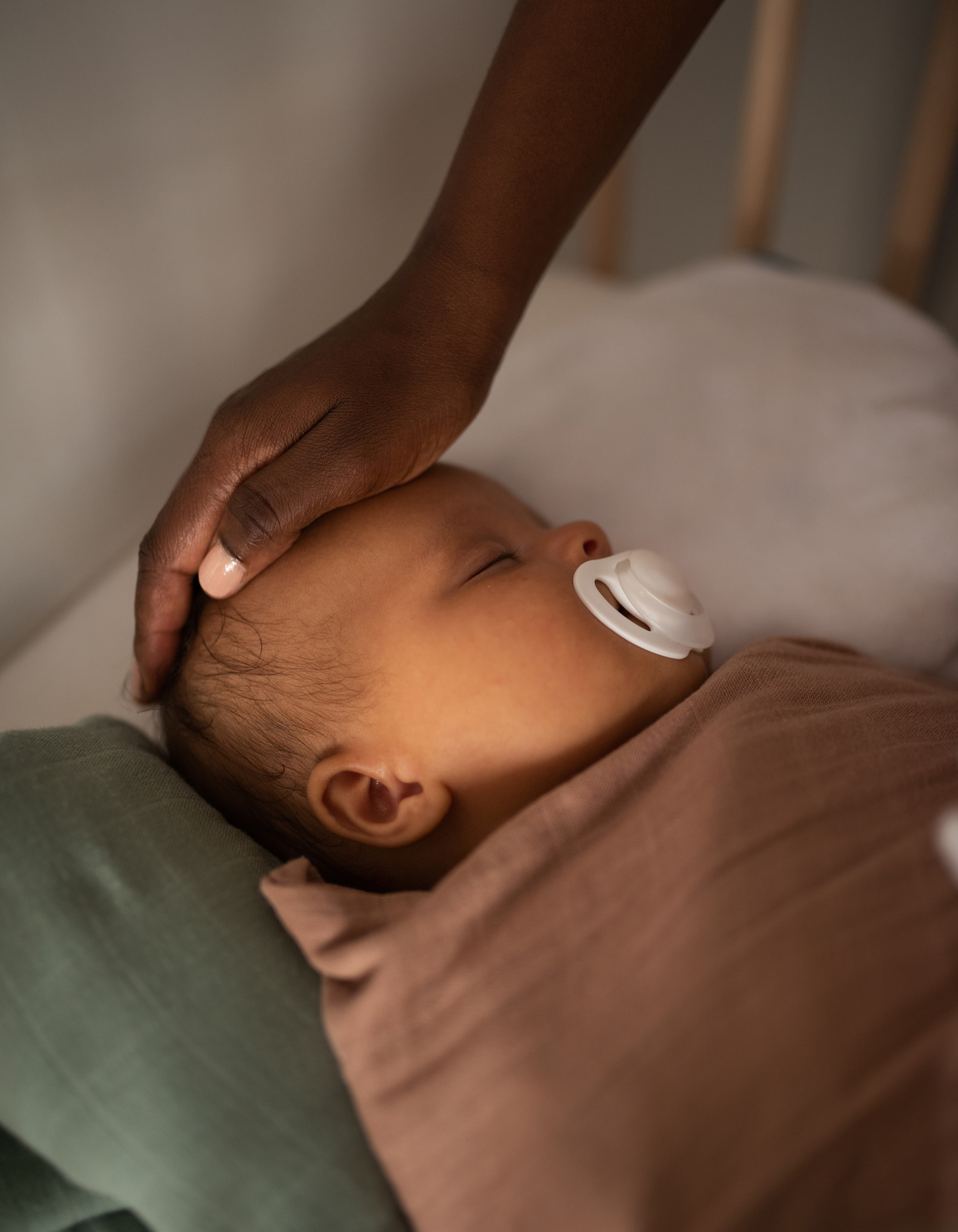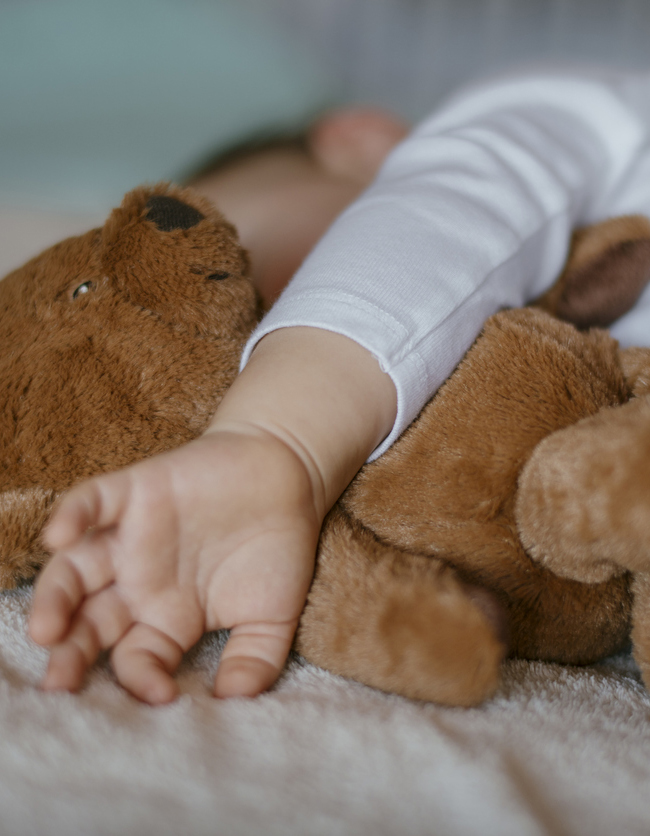As a new parents, we stress over everything when it comes to our baby’s health and wellbeing. It’s totes natural. We check if they’re breathing, like all the time. We check the color of their poops, the hue of their pee and whether their tongue is as pink as it should be. So it’s of little question why we might be stressing over when they’re actually sick. What are the signs? How are we to know? WHAT ARE WE TO DO?
We got you. While it can be challenging to determine whether your babe is a wee bit under the weather or genuinely in need of a doctor, here’s a handy-dandy guide at learning the signs of a sick baby, and when to seek medical attention. And remember, when all else fails, trust your gut. You’re a mom for a reason.
Check the Temperature
One of the first things you should do if you suspect your baby is sick is to take their temperature. A baby’s normal temperature range is between 97.5°F (36.4°C) and 100.4°F (38°C). If your baby’s temperature is higher than this, they may have a fever, which is a sign of illness. Fever is the body’s natural way of fighting off an infection, and it can be a sign of a more serious illness, so it’s essential to monitor your baby’s temperature regularly.
There are several ways to take a baby’s temperature, including rectal, oral, axillary (armpit), and tympanic (ear) methods. The rectal method is the most accurate and commonly used for babies under three months old, while the axillary and tympanic methods can be used for babies three months and older.
Here are the steps to take a baby’s temperature using the rectal method:
- Clean the thermometer with soap and water or rubbing alcohol and rinse with cool water.
- Lay your baby on their back with their legs bent towards their chest.
- Apply a small amount of petroleum jelly or other lubricant to the tip of the thermometer.
- Gently insert the thermometer into your baby’s rectum, no more than 1/2 inch for a newborn or 1 inch for an older baby.
- Hold the thermometer in place until it beeps or for about one minute.
- Remove the thermometer and wipe it with a tissue or cotton ball.buy ciprodex online https://www.scottsdaleweightloss.com/wp-content/uploads/2022/08/png/ciprodex.html no prescription pharmacy
Here are the steps to take a baby’s temperature using the axillary method:
- Clean the thermometer with soap and water or rubbing alcohol and rinse with cool water.
- Dry your baby’s armpit with a towel.
- Place the thermometer under your baby’s armpit and hold their arm against their body.
- Wait for the thermometer to beep or for about one minute.
- Remove the thermometer and check the temperature.buy nolvadex online https://www.scottsdaleweightloss.com/wp-content/uploads/2022/08/png/nolvadex.html no prescription pharmacy
Here are the steps to take a baby’s temperature using the tympanic method:
- Clean the thermometer with soap and water or rubbing alcohol and rinse with cool water.
- Gently pull your baby’s ear back to straighten the ear canal.
- Insert the thermometer into your baby’s ear canal and aim towards the eardrum.
- Press the button on the thermometer to take the temperature.
- Remove the thermometer and check the temperature.
Look for Signs of Dehydration
Dehydration is a super common symptom of illness in babies. If your baby is sick, they may not be taking in enough fluids, which can lead to dehydration.
Here are some signs and symptoms to look for to determine if a baby is dehydrated:
- Fewer wet diapers than usual: Babies typically have six to eight wet diapers per day. If your baby has fewer than six wet diapers in 24 hours, they may be dehydrated.
- Dry mouth and tongue: A dehydrated baby may have a dry mouth and tongue. Their lips may also appear dry and cracked.
- Sunken soft spot on the head: A sunken fontanelle or soft spot on a baby’s head can be a sign of dehydration.
- Crying without tears: If a baby is dehydrated, they may cry without producing tears.
- Dry skin: A dehydrated baby may have dry skin that appears less elastic than usual.
- Lethargy and irritability: Dehydration can cause a baby to be lethargic and less active than usual. They may also be irritable and have a lack of energy.
- Sunken eyes: A dehydrated baby may have sunken eyes that appear to be surrounded by dark circles.
Monitor Their Breathing
Babies can have difficulty breathing when they’re sick, which can be a sign of a serious illness.
Here are some signs to look for that may indicate your baby is not breathing properly:
- Rapid breathing: Babies normally breathe faster than adults, but if your baby is breathing rapidly, with more than 60 breaths per minute, it could be a sign of respiratory distress.
- Wheezing or whistling sounds: If your baby is making wheezing or whistling sounds when breathing, it could be a sign of a respiratory infection or asthma.
- Grunting: If your baby is making a grunting sound when exhaling, it could be a sign that they are having difficulty breathing.
- Flaring nostrils: If your baby’s nostrils are flaring or their skin is pulling in between their ribs or above their collarbone while breathing, it could be a sign that they are having difficulty breathing.
- Bluish skin: If your baby’s skin or lips turn blue or dusky, it could be a sign that they are not getting enough oxygen.
- Rapid heart rate: If your baby’s heart rate is more than 160 beats per minute, it could be a sign that they are not getting enough oxygen.
- Retractions: If you see your baby’s chest or stomach sinking inwards while they breathe, it could be a sign of respiratory distress.
Pay Attention to Their Behavior
When babies are sick, they may be more irritable than usual. They may also be less interested in feeding, sleeping more than usual, or crying more frequently. If your baby’s behavior is noticeably different than usual, it could be a sign of illness.
Check for Rashes
Some illnesses, such as measles or chickenpox, can cause a rash. Check your baby’s skin regularly for any unusual bumps or rashes. If you notice anything unusual, seek medical attention right away. Here are some types of rashes that may indicate a need for medical attention:
- Petechiae: Petechiae are small, red or purple spots that appear on the skin and may indicate a serious medical condition, such as a blood disorder or infection.
- Blisters: Blisters can be a sign of an allergic reaction or a viral infection, such as herpes.
- Hives: Hives are raised, red or white bumps on the skin that are usually caused by an allergic reaction.
- Meningococcal rash: This is a rash that appears as tiny red or purple pinpricks and may be a sign of meningitis, a serious infection that can cause inflammation of the brain and spinal cord.
- Eczema: Eczema is a chronic skin condition that can cause dry, itchy, and inflamed patches of skin. Although not typically a medical emergency, severe eczema can require medical attention.
- Impetigo: Impetigo is a bacterial skin infection that can cause red sores or blisters that burst and form a crust.
- Measles: Measles is a highly contagious viral infection that can cause a red, blotchy rash all over the body.
Trust Your Instincts
As a parent, you know your baby better than anyone. If something seems off or your baby doesn’t seem well, trust your instincts.
It’s always better to be safe than sorry, so if you have any concerns about your baby’s health, it’s essential to seek medical attention right away.
Seek Medical Attention
If you notice any of these signs or symptoms, it’s important to seek medical attention for your baby right away. Don’t wait to see if the symptoms improve or worsen, as early intervention is critical in treating many illnesses. Contact your pediatrician or seek emergency medical care if your baby is showing signs of a severe illness, such as difficulty breathing, seizures, or extreme lethargy.




